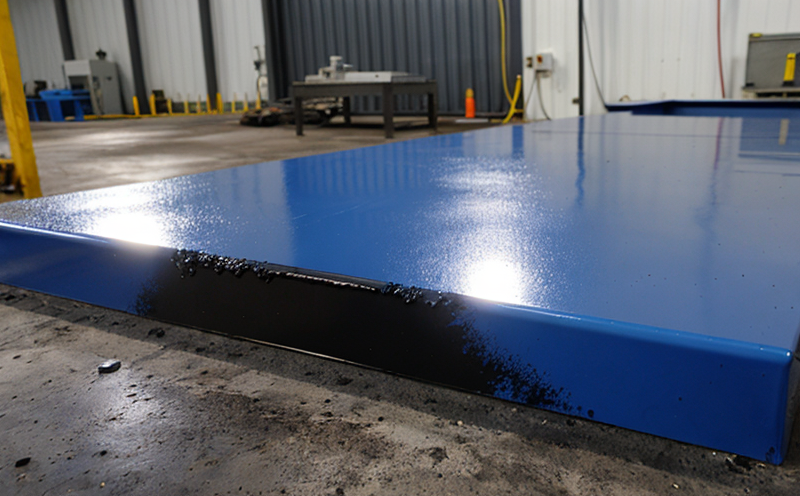ISO 9352 Abrasion Resistance of Plastics Coatings
The ISO 9352 standard is a critical tool in evaluating the abrasion resistance of plastics coatings used across various industries. This test method assesses how well a coating withstands mechanical wear from friction, which is essential for ensuring durability and longevity in applications where surfaces are exposed to abrasive conditions.
Plastics coatings play a vital role in protecting materials against environmental factors such as abrasion, chemical attack, and weathering. In sectors like automotive, aerospace, electronics, and construction, the integrity of these coatings is crucial for maintaining product performance over time. The ISO 9352 test helps manufacturers ensure that their coatings meet quality standards, thereby enhancing reliability and reducing maintenance costs.
The abrasion resistance of plastics coatings can be influenced by factors such as polymer type, thickness, curing process, and surface treatment. By subjecting the coating to controlled abrasive wear using this standardized procedure, laboratories can provide detailed insights into how well a given coating will perform under real-world conditions.
Understanding the abrasion resistance of plastics coatings is not just about meeting regulatory requirements; it's also about optimizing product performance and extending service life. For instance, in the automotive industry, ensuring that paint finishes have adequate abrasion resistance can significantly enhance vehicle durability. Similarly, in electronics manufacturing, protecting circuit boards with appropriate coatings ensures long-term reliability.
The ISO 9352 test involves subjecting a coated specimen to repeated abrasive action using an oscillating sandpaper wheel. The goal is to measure the mass loss or dimensional changes of the coating after exposure to this abrasion. This process simulates the real-world conditions that coatings might encounter in use, providing valuable data for quality control and product development.
Accurate measurement is crucial in this test as even slight variations can affect results. Laboratories equipped with precision instruments like microbalances or micrometers ensure reliable quantification of abrasion-induced changes. Additionally, controlled environmental conditions during testing are vital to mimic the expected service environment accurately.
The ISO 9352 method is widely recognized for its ability to provide consistent and repeatable results across different laboratories. This standardization ensures that manufacturers can compare their products consistently with industry benchmarks. Moreover, it allows for effective communication between stakeholders involved in product development, production, and quality assurance.
In summary, the ISO 9352 abrasion resistance test is a cornerstone of modern materials science and engineering practices. By providing objective data on coating performance, this standard supports informed decision-making throughout the product lifecycle—from initial design through to final application.
Why It Matters
The abrasion resistance of plastics coatings is a critical factor in many industries where materials are exposed to mechanical wear and tear. Ensuring that these coatings can withstand such conditions not only enhances the durability of products but also contributes significantly to cost savings by reducing maintenance and replacement costs.
- Enhanced Durability: Products with better abrasion resistance last longer, which translates into reduced replacement frequency.
- Cost Efficiency: By investing in high-quality coatings upfront, companies can avoid the expenses associated with frequent repairs or replacements.
- Environmental Impact: Longer-lasting products mean less waste and a smaller carbon footprint over their lifecycle.
The ISO 9352 test helps manufacturers identify areas for improvement in their coating formulations. By understanding how different variables affect abrasion resistance, they can optimize processes to produce more resilient materials. This leads to better overall product quality while maintaining cost-effectiveness.
Applied Standards
| Standard | Description |
|---|---|
| ISO 9352:2018 | Plastics - Determination of resistance to abrasion by means of the rotating sandpaper test. |
Customer Impact and Satisfaction
- Manufacturers receive reliable data on coating performance, aiding in informed decisions during product development.
- Quality managers gain confidence knowing that their products meet stringent industry standards.
- R&D engineers can refine formulations based on test results, leading to innovative solutions.





